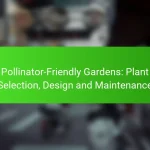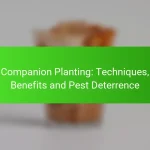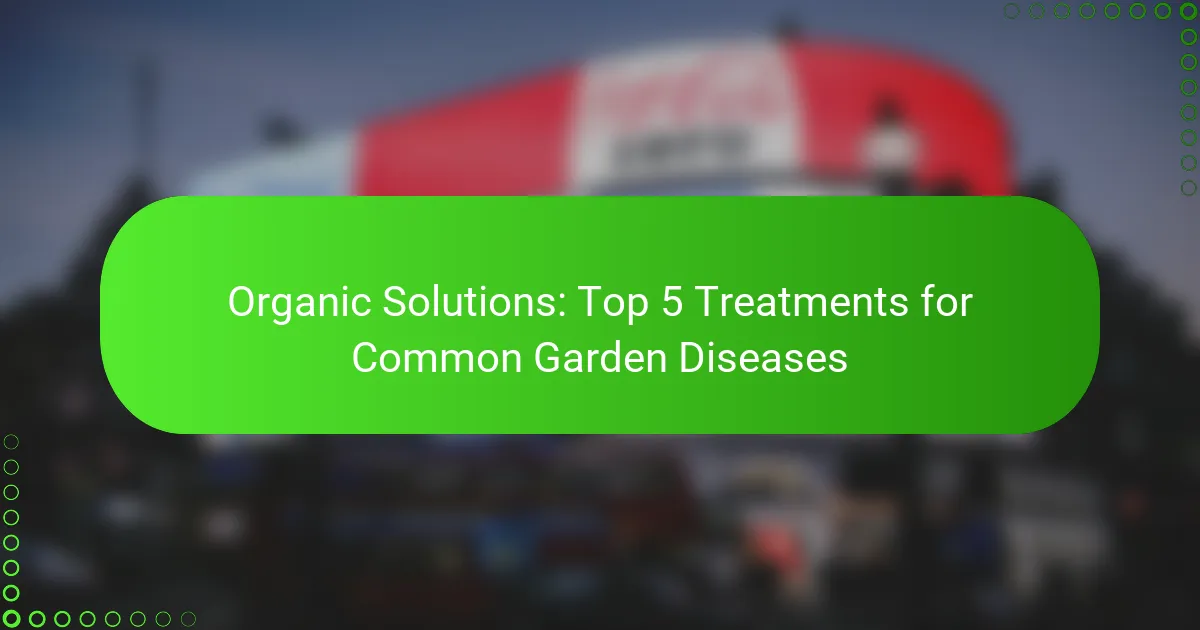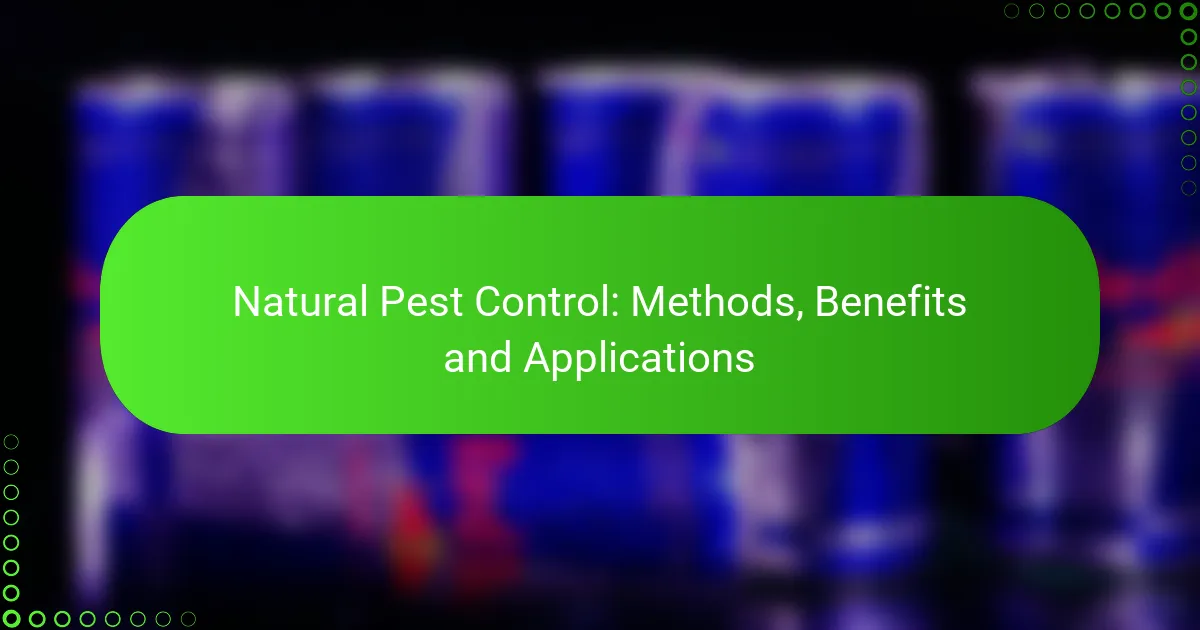Managing common garden diseases can be effectively achieved through organic solutions that prioritize environmental sustainability. Treatments such as neem oil, baking soda solutions, and garlic spray not only combat plant ailments but also protect beneficial organisms and ensure safety for humans and pets. By utilizing natural compounds, these remedies disrupt disease cycles while promoting a healthier garden ecosystem.
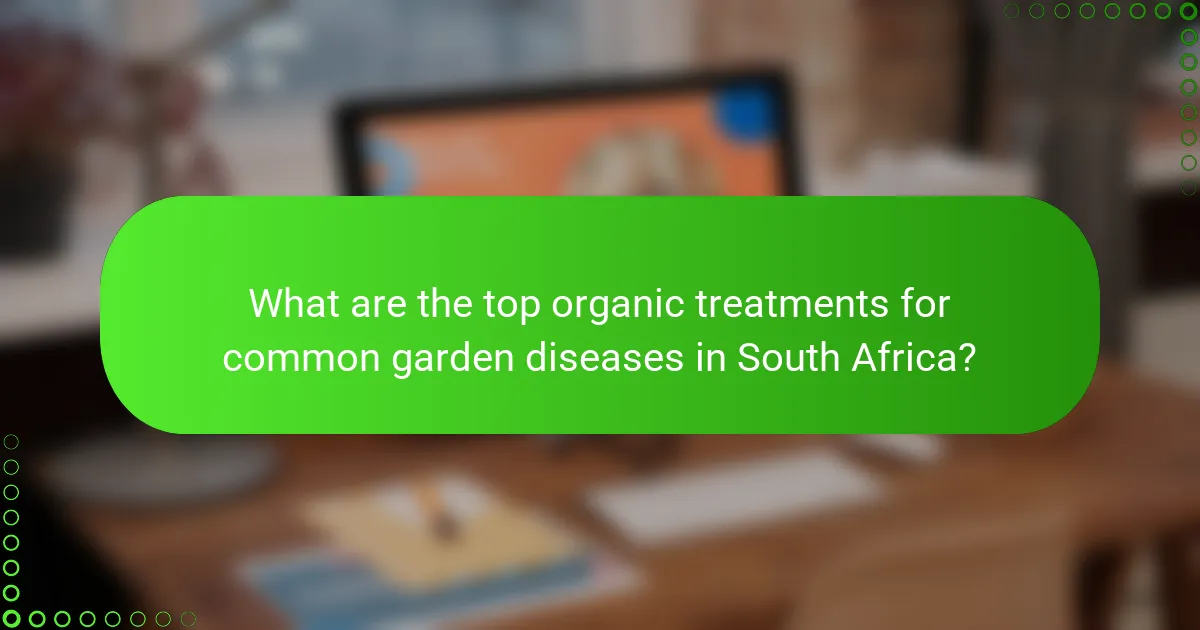
What are the top organic treatments for common garden diseases in South Africa?
The top organic treatments for common garden diseases in South Africa include neem oil, baking soda solutions, garlic spray, copper fungicide, and compost tea. These remedies are effective in managing various plant ailments while being environmentally friendly and safe for use in home gardens.
Neem oil for powdery mildew
Neem oil is a natural pesticide derived from the seeds of the neem tree and is effective against powdery mildew, a common fungal disease. It works by disrupting the life cycle of the fungus, preventing spore germination and growth.
To use neem oil, mix it with water and a few drops of dish soap to help it emulsify. Spray the solution on affected plants every 7-14 days until the mildew is under control. Ensure to apply in the early morning or late afternoon to avoid leaf burn.
Baking soda solution for fungal infections
A baking soda solution is a simple and effective treatment for various fungal infections, including powdery mildew and leaf spot. The sodium bicarbonate in baking soda alters the pH on the leaf surface, making it less hospitable for fungi.
Mix one tablespoon of baking soda with a gallon of water and a few drops of dish soap. Spray this solution on the affected areas every week until symptoms improve. Avoid using too much, as it can cause leaf burn if concentrated.
Garlic spray for aphid control
Garlic spray is a potent organic remedy for controlling aphids, which can damage plants by sucking sap. The strong odor of garlic repels these pests and can disrupt their feeding habits.
To prepare garlic spray, blend a few cloves of garlic with water, strain the mixture, and add a small amount of dish soap. Spray this solution directly onto infested plants every few days until the aphid population decreases. Be cautious with the concentration to avoid harming beneficial insects.
Copper fungicide for blight prevention
Copper fungicide is an effective organic treatment for preventing blight, particularly in tomatoes and potatoes. It works by inhibiting fungal growth and can be used as a preventative measure before symptoms appear.
Apply copper fungicide according to the manufacturer’s instructions, typically every 7-10 days during wet weather. Ensure thorough coverage of the plant, especially the undersides of leaves, where spores often reside. Always check local regulations regarding the use of copper products in gardens.
Compost tea for soil health
Compost tea is a nutrient-rich liquid made by steeping compost in water, providing beneficial microorganisms and nutrients to the soil. This organic treatment enhances soil health and helps plants resist diseases.
To make compost tea, fill a burlap sack with mature compost and steep it in a bucket of water for 24-48 hours. Dilute the tea with water before applying it to the soil or as a foliar spray. Use compost tea every few weeks during the growing season to promote healthy plant growth.

How do these organic solutions work?
Organic solutions for garden diseases function by utilizing natural compounds that disrupt the life cycles of pests or alter the conditions that allow diseases to thrive. These treatments are often safer for the environment and beneficial organisms compared to synthetic chemicals.
Neem oil disrupts insect life cycles
Neem oil is derived from the seeds of the neem tree and contains compounds that interfere with the growth and reproduction of various insects. When applied to plants, it can prevent larvae from maturing into adults, effectively reducing pest populations over time.
To use neem oil, mix it with water according to the product instructions, typically around 1-2 tablespoons per liter. Spray it on affected plants in the early morning or late evening to avoid harming beneficial insects.
Baking soda alters pH to inhibit fungi
Baking soda, or sodium bicarbonate, can be an effective fungicide by raising the pH level on plant surfaces, creating an inhospitable environment for fungal spores. This treatment is particularly useful against powdery mildew and other common fungal diseases.
To apply, mix about 1 tablespoon of baking soda with a liter of water and a few drops of liquid soap to help it adhere to leaves. Spray this solution on the affected areas every 7-14 days, especially during humid conditions.
Garlic contains sulfur compounds that repel pests
Garlic is rich in sulfur compounds, which act as natural repellents for many garden pests. When crushed or blended, garlic releases these compounds, making it an effective deterrent against aphids, spider mites, and other harmful insects.
To create a garlic spray, blend several cloves with water and strain the mixture. Dilute with additional water and spray on plants every week or after rain. This method not only repels pests but can also enhance the overall health of your garden.
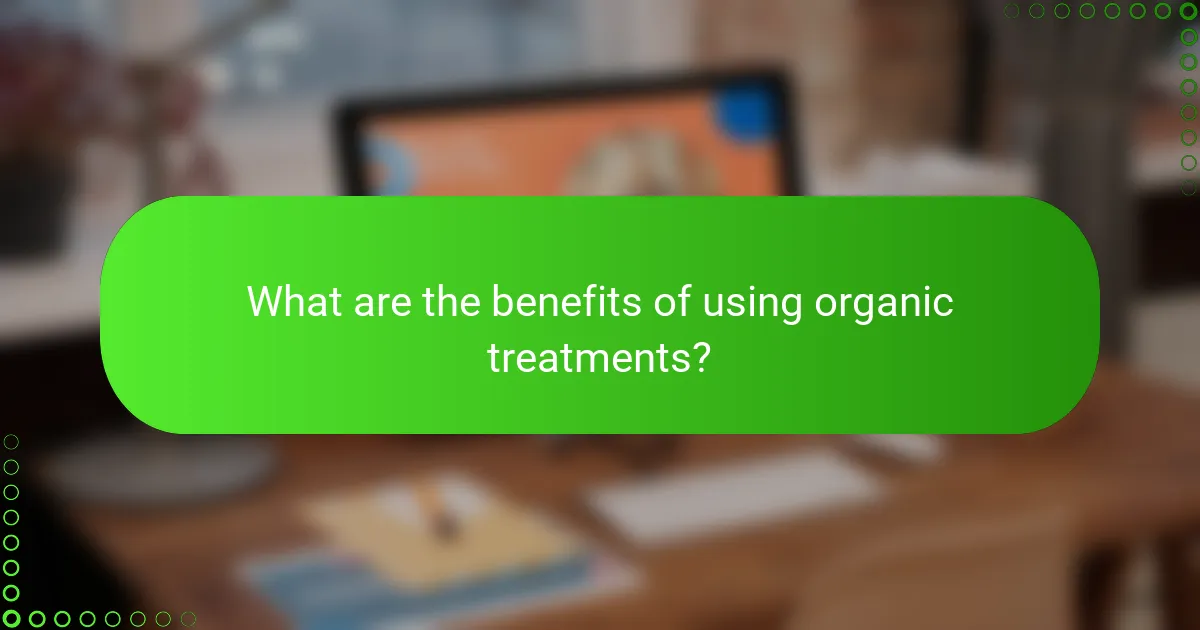
What are the benefits of using organic treatments?
Using organic treatments for garden diseases offers numerous advantages, including environmental sustainability and safety for humans and pets. These methods not only help manage pests and diseases but also promote healthier ecosystems in your garden.
Environmentally friendly and sustainable
Organic treatments are designed to minimize harm to the environment. They often utilize natural ingredients that break down more easily than synthetic chemicals, reducing soil and water contamination. This approach supports biodiversity, as beneficial insects and microorganisms are less likely to be harmed.
For example, using neem oil or compost tea can effectively control pests while enhancing the overall health of your garden. These methods contribute to a sustainable gardening practice that can be maintained over the long term.
Safe for pets and humans
Organic treatments are generally safer for both pets and humans compared to conventional pesticides. Many organic solutions are derived from natural sources, making them less toxic and reducing the risk of harmful exposure. This is particularly important for households with children or pets that may come into contact with treated areas.
When using organic solutions, always check product labels for safety information and application guidelines. For instance, products containing diatomaceous earth are safe for pets and can be used to control pests without posing health risks.
Improves soil health over time
Organic treatments not only address immediate pest problems but also enhance soil health in the long run. By using compost, organic fertilizers, and natural amendments, you can improve soil structure and fertility, leading to better plant growth and resilience against diseases.
Incorporating organic matter into your garden can increase microbial activity, which is essential for nutrient cycling. Over time, this practice can transform your garden into a thriving ecosystem that supports diverse plant life and reduces the need for chemical interventions.

What are the prerequisites for using organic solutions?
Before applying organic solutions to garden diseases, ensure you understand the specific needs of your plants and the nature of the diseases affecting them. Familiarity with organic practices and local regulations regarding organic treatments is essential for effective and compliant gardening.
Understanding plant disease symptoms
Recognizing plant disease symptoms is crucial for timely intervention. Common signs include yellowing leaves, wilting, spots, and unusual growth patterns. Each symptom can indicate different issues, so observing your plants regularly can help you identify problems early.
For example, if you notice black spots on leaves, this could signal fungal infections, while powdery mildew appears as a white, powdery coating. Understanding these symptoms allows you to choose appropriate organic treatments effectively.
Identifying affected plants and areas
Once symptoms are recognized, pinpointing the affected plants and areas is the next step. Inspect your garden thoroughly, looking for clusters of symptoms that may indicate a localized outbreak. This can help you determine whether the issue is widespread or isolated.
For effective management, consider marking affected plants and areas for targeted treatment. This approach not only conserves resources but also minimizes the risk of spreading the disease to healthy plants. Regular monitoring and documentation can aid in understanding disease patterns over time.
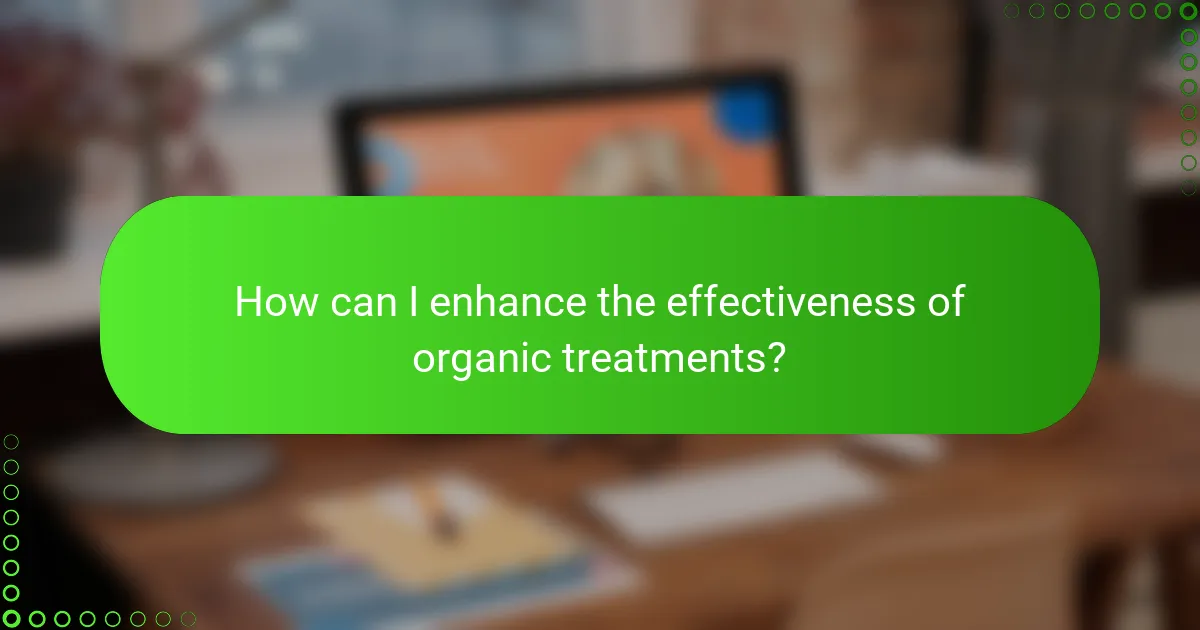
How can I enhance the effectiveness of organic treatments?
To enhance the effectiveness of organic treatments for garden diseases, focus on proper application techniques and timing. Ensuring that treatments are applied during optimal weather conditions and at the right growth stages can significantly improve their efficacy.
Regular monitoring of plant health
Regular monitoring of plant health is essential for early detection of diseases and pests. Inspect your plants weekly for any signs of distress, such as discoloration, wilting, or unusual spots. This proactive approach allows you to address issues before they escalate.
When monitoring, pay attention to environmental factors that may affect plant health, such as humidity and temperature. Keeping a garden journal can help you track changes and identify patterns over time, making it easier to determine the best times for applying organic treatments.
Additionally, consider using tools like soil moisture meters or pH testers to assess the growing conditions. Maintaining optimal soil health is crucial for plant resilience against diseases, so ensure your soil is well-aerated and nutrient-rich.



